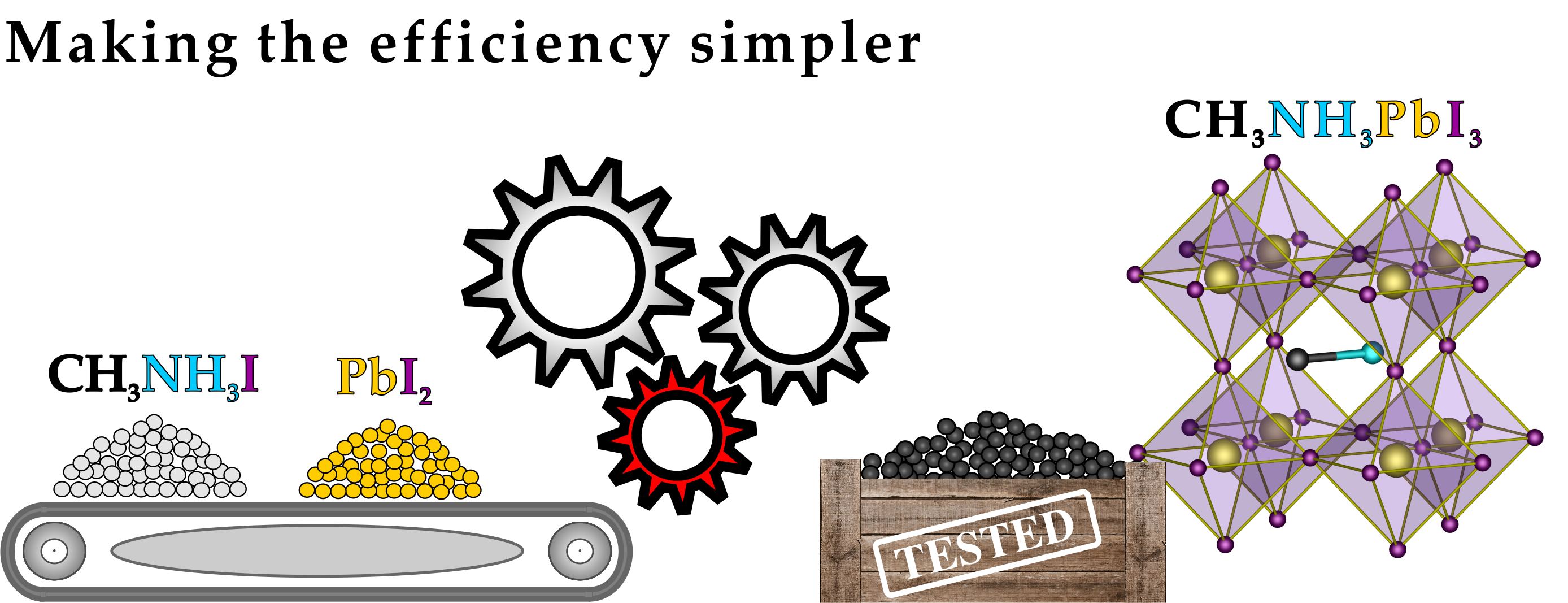Daniel Prochowicz,a+ Marius Franckevičius,bc+ Anna Maria Cieślak,d
Shaik M. Zakeeruddin,b Michael Grätzel,*b Janusz Lewińskiad
a Faculty of Chemistry, Warsaw University of Technology, Noakowskiego 3, 00-664 Warsaw, Poland
b Laboratory of Photonics and Interfaces, Institute of Chemical Sciences and Interfaces, School of Basic Sciences, Ecole Federale Polytechnique de Lausanne (EPFL), CH-1015 Lausanne, Switzerland
c Center for Physical Sciences and Technology, Savanoriu Ave. 231, LT-02300 Vilnius, Lithuania
d Institute of Physical Chemistry, Polish Academy of Sciences, Kasprzaka 44/52, 01-224 Warsaw, Poland
DOI: 10.1039/C5TA04904K.
Received 1 Jul 2015, Accepted 25 Aug 2015
First published online 27 Aug 2015

We present a facile mechanochemical route for the preparation of hybrid CH3NH3PbI3 (MAPbI3) perovskite particles with the size of several hundred nanometers for high-efficiency thin-film photovoltaics. Powder X-ray diffraction measurements demonstrates that mechanosynthesis is a suitable strategy to produce highly crystalline CH3NH3PbI3 material showing no detectable amounts of the starting CH3NH3I and PbI2 reagents. Thermal stability measurements based on thermogravimetric analysis data of mechanosynthesized perovskite particles, indicated that the as-grounded MAPbI3 are stable up to 300°C with no detectable material loss at lower temperatures. Optical properties of newly synthesized perovskite particles were characterized by applying steady state absorption and fluorescence spectroscopy, which confirmed a direct band band-gap of 1.48 eV. Time resolved single photon counting measurements revealed that 70% of charges undergo recombination with a 61 ns lifetime. The solar cell devices made from mechanosynthesized perovskite particles achieved a power conversion efficiency of 9.1% when applying a one step deposition method.